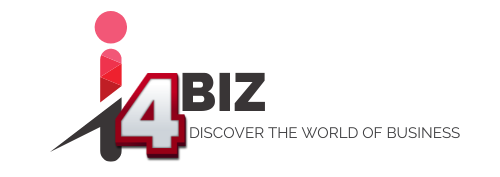In today’s rapidly evolving technological landscape, release and production measurement play crucial roles in ensuring the success and efficiency of various industries. In this comprehensive text, we will delve into the concepts of release and production measurement, explore their differences, and speculate on how technology will shape their integration in the year 2024. Furthermore, we will touch upon the financial prospects of working on a temporary basis, identify the leaders in release practices in Denmark, and address the question of whether staking is the same as polar measurement.
What is the difference between release and production measurement?

Release measurement refers to the process of quantifying and evaluating the performance and quality of software releases. It involves assessing various metrics such as stability, reliability, functionality, and user satisfaction. Release measurement allows organizations to gauge the effectiveness of their software development and deployment processes, identify bottlenecks, and make data-driven decisions to improve overall performance. By monitoring and analyzing key indicators, businesses can optimize their release cycles, minimize downtime, and enhance customer experiences.
On the other hand, production measurement focuses on quantifying and analyzing the performance of production systems or manufacturing processes. It involves gathering data on factors like output, efficiency, productivity, and quality. Production measurement allows organizations to monitor the health of their operations, identify areas for improvement, and optimize resource allocation. By measuring key performance indicators (KPIs) such as cycle time, throughput, and defect rate, companies can streamline their production processes, reduce costs, and increase overall efficiency.
While release and production measurement share similarities in their objective of evaluating performance, they differ in their specific areas of focus as explained by Diagona. Release measurement primarily centers around software development and deployment, whereas production measurement encompasses a broader range of industries, including manufacturing, supply chain, and logistics. Release measurement primarily evaluates the quality and stability of software releases, while production measurement focuses on the output, efficiency, and quality of physical goods or services.
How will release and measurement technology go together in 2024?

Looking ahead to 2024, the integration of release and measurement technology is set to become increasingly seamless and sophisticated. Advancements in automation, artificial intelligence, and machine learning will revolutionize the way organizations measure, monitor, and optimize their release and production processes. Intelligent algorithms will enable real-time analysis of vast amounts of data, providing actionable insights to enhance decision-making and drive continuous improvement.
In the realm of release measurement, we can expect to see the emergence of advanced analytics platforms that leverage machine learning algorithms to detect anomalies, predict failure points, and recommend optimization strategies. These platforms will empower businesses to proactively address potential issues before they impact end-users, resulting in higher software quality and customer satisfaction.
In the field of production measurement, Industry 4.0 technologies will further revolutionize operations. The integration of the Internet of Things (IoT), big data analytics, and cloud computing will enable real-time monitoring and optimization of production processes. Smart sensors and connected devices will provide granular insights into machine performance, maintenance needs, and quality control, allowing organizations to implement predictive maintenance, reduce downtime, and enhance overall productivity.
If you work on a temporary basis – what can you earn?

Switching gears to the financial aspect of temporary work, the potential earnings can vary depending on factors such as industry, skillset, and demand. Temporary work offers individuals the flexibility to take on short-term assignments or projects without committing to long-term employment. The compensation for temporary work can range from hourly rates to project-based payments, and it often depends on the level of expertise and experience required for the specific role. In some cases, temporary workers may earn higher rates due to the specialized nature of their skills or the urgency of the task at hand.
When it comes to release practices in Denmark, several companies have distinguished themselves as leaders in the field. Novo Nordisk, a global healthcare company headquartered in Denmark, has been recognized for its robust release management processes. The company’s meticulous approach to quality assurance and release planning has resulted in successful and timely software deployments, ensuring the reliability of their critical systems and applications.
Another notable player in release management in Denmark is Maersk, a renowned shipping and logistics company. Maersk has implemented rigorous release measurement practices to ensure smooth operations across their vast network. By closely monitoring their software releases and analyzing performance metrics, Maersk can proactively address potential issues and maintain high levels of efficiency and customer satisfaction.
While these companies have demonstrated excellence in release management, it’s important to note that the best practices and leaders in this field can vary across industries and contexts. It is advisable for organizations to identify and adopt release management strategies that align with their specific requirements, considering factors such as industry norms, scale of operations, and technological infrastructure.
Is staking the same as polar measurement?

Now let’s address the question of whether staking is the same as polar measurement. Staking and polar measurement are two distinct concepts in different contexts. Staking refers to the act of depositing and holding cryptocurrency tokens in a blockchain network to support its operations. Stakers typically earn rewards for their participation and contribution to the network’s security and consensus mechanisms. Staking is a fundamental element of blockchain protocols that utilize Proof of Stake (PoS) consensus algorithms.
On the other hand, polar measurement is not a commonly known term or concept, at least in the context of release and production measurement or the blockchain field. It is possible that there may be a misunderstanding or confusion regarding the term “polar measurement” in the provided list of topics. However, if there is a different context or specific definition associated with polar measurement, please provide additional details for a more accurate response.
In conclusion, release and production measurement are vital aspects of ensuring quality, efficiency, and performance in software development and various industries. As technology advances, the integration of release and measurement technology will continue to evolve, enabling organizations to make data-driven decisions, optimize processes, and deliver superior products and services. Temporary work offers individuals flexibility and potential earnings that can vary based on factors such as industry, skills, and demand. Finally, when it comes to release management, companies like Novo Nordisk and Maersk in Denmark have exemplified excellence in their respective industries.

